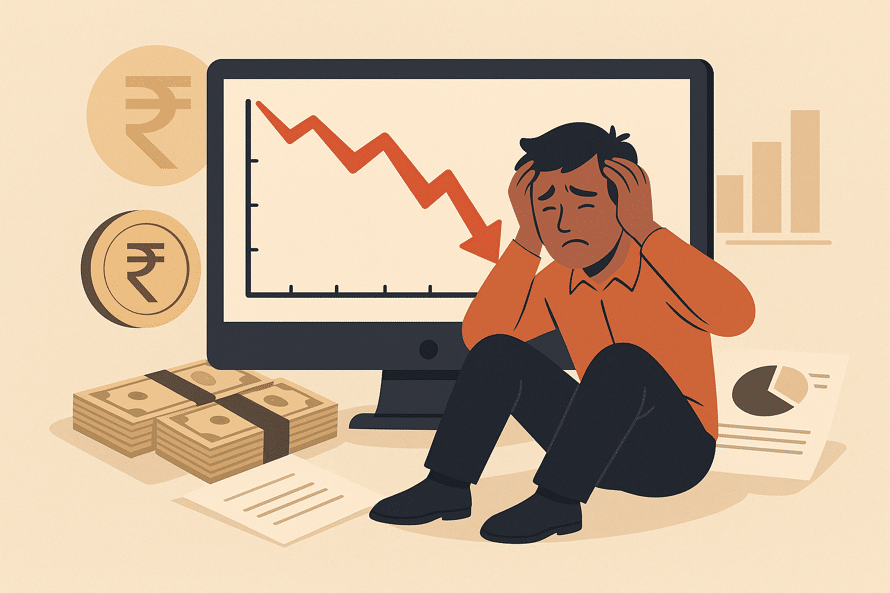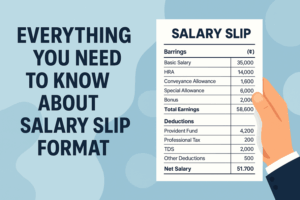
Introduction: The Harsh Reality Behind Stock Market Losses
Investing in the stock market can be one of the most powerful ways to grow your wealth over time. But here’s the flip side—many retail investors, especially beginners, often end up losing money instead of making it.
Why does this happen? The reasons are deeper than just “bad luck” or “wrong timing”. In this post, we’ll break down the key reasons behind stock market losses in simple terms, with relatable examples and practical tips so you can avoid these mistakes yourself.
1. Behavioral Biases: Your Brain Might Be Your Worst Enemy
Loss Aversion & Disposition Effect
Most of us hate losing money more than we enjoy making it. This fear causes investors to hold onto losing stocks hoping they’ll bounce back, while they sell winners too early. It’s like clinging to a sinking ship while jumping off a jet just because it’s flying too high.
What to do: Set a predefined exit strategy. Don’t let emotions dictate decisions.
Overconfidence Bias
Feeling like a stock market genius after a few wins? That’s overconfidence. It leads to overtrading, excessive risk, and ignoring diversification.
Tip: Even experts use diversified portfolios and accept they can’t predict the market all the time.
Herd Mentality & FOMO
Ever bought a stock just because “everyone’s talking about it”? That’s herd mentality, and it’s dangerous. Remember the GameStop rally? Many investors jumped in late and lost big.
Lesson: Do your own homework. Don’t follow hype blindly.
Anchoring & Recency Bias
You buy a stock at ₹100. It falls to ₹70, but you keep waiting for it to return to ₹100—even if fundamentals have changed. That’s anchoring. Meanwhile, recency bias makes you overly pessimistic during downturns.
Fix: Look at current facts, not just past prices or recent trends.
Myopic Risk Aversion
Obsessing over short-term market fluctuations makes you lose sight of long-term goals. Investors often panic and withdraw at market lows, missing the recovery.
Strategy: Stick to a long-term plan and review only occasionally—not every hour.
2. Financial Illiteracy: When Lack of Knowledge Costs You Real Money
Poor Investment Choices
Many first-time investors put money into complicated, risky, or even fraudulent schemes simply because they don’t understand how investing works.
Tip: Learn the basics—asset allocation, risk-reward trade-offs, and compounding.
High Debt and Poor Money Management
Overspending and credit card debt due to poor financial planning often leaves little room for investing or recovery during downturns.
Advice: Manage expenses wisely and clear high-interest debt before aggressively investing.
Falling for Scams
Without basic financial education, you become easy prey for “get rich quick” schemes.
Golden Rule: If it sounds too good to be true, i’t probably it’s not.
3. Inadequate Risk Management: When Good Plans Go Wrong
Lack of Diversification
Putting all your eggs in one basket (like a single stock or sector) can be disastrous. Even great companies stumble.
Smart Move: Diversify across sectors, asset classes, and geographies.
No Stop-Loss Orders
Without a stop-loss, you risk massive losses when prices crash. A simple rule can save your portfolio.
Pro Tip: Always set a stop-loss based on your risk appetite.
Excessive Use of Margin
Borrowing money to trade (using leverage) can magnify your losses faster than your gains.
Reminder: Use leverage only if you completely understand the risks.
No Strategy or Defined Risk Tolerance
Jumping into the market without a plan leads to emotional, impulsive decisions.
Fix: Define your goals, timeline, and risk tolerance before investing a rupee.
Not Rebalancing Portfolio
Over time, your portfolio can become lopsided. Rebalancing helps maintain your intended risk profile.
Habit: Rebalance every 6–12 months.
4. External Factors: The Unpredictable Market Wildcards
Economic Downturns
Recessions like in 2008 or the COVID crash can drag down even fundamentally strong stocks.
Geopolitical Events
Wars, elections, and policy changes can spark market volatility. You can’t control them, but you can prepare.
Natural Disasters
These can disrupt economies and cause panic selling. Keep a portion of your portfolio in safe assets.
Tech Shifts and Trade Disruptions
Rapid tech changes or trade wars (like US-China) affect companies’ profits, especially exporters.
5. Suboptimal Investment Approaches: Playing the Game Wrong
Speculating Instead of Investing
Trading based on tips, trends, or news isn’t investing—it’s gambling.
Best Practice: Focus on long-term growth based on fundamentals, not daily price movements.
Abandoning Investment Plans Prematurely
Many investors stop SIPs or withdraw money during a dip—locking in losses and missing the recovery.
Tip: Stay the course. Historically, markets bounce back.
Chasing Trends
Buying during a rally and selling during a crash is a guaranteed way to lose money.
Better Way: Use a disciplined, research-backed approach.
6. Hidden Wealth Killers: Fees and Costs That Add Up
Even small annual fees can erode your returns over time due to compounding.
Common Charges to Watch Out For:
- Expense ratios on mutual funds
- Brokerage commissions
- Advisory fees
- Bid-ask spreads
- Hidden charges like 12b-1 fees
Illustration: A 2% annual fee can cost you ₹1.7 lakh over 30 years on a ₹500/month SIP. That’s almost as much as your total investment!
Solution: Choose low-cost index funds and brokers with transparent pricing.
Conclusion: How to Stop Losing and Start Winning
To stop bleeding money in the markets:
- Be aware of your psychological traps.
- Get financially educated.
- Diversify and manage risk.
- Stay invested long-term.
- Minimize costs and fees.
Stock market success isn’t about timing the market or finding “the next big thing”. It’s about patience, discipline, and continuous learning.
FAQs
Q. Why do most retail investors lose money in the stock market?
Due to behavioral biases like overconfidence and loss aversion, lack of financial knowledge, poor risk management, and impulsive investing strategies.
How can I stop losing money in stocks?
Focus on financial education, diversification, setting stop-loss orders, avoiding speculation, and sticking to a long-term plan.
Is stock market investing safe for beginners?
Yes, if done right—with proper research, long-term goals, and disciplined risk management.
What’s the biggest mistake investors make?
Reacting emotionally—panic selling during dips or blindly chasing trends without research.







